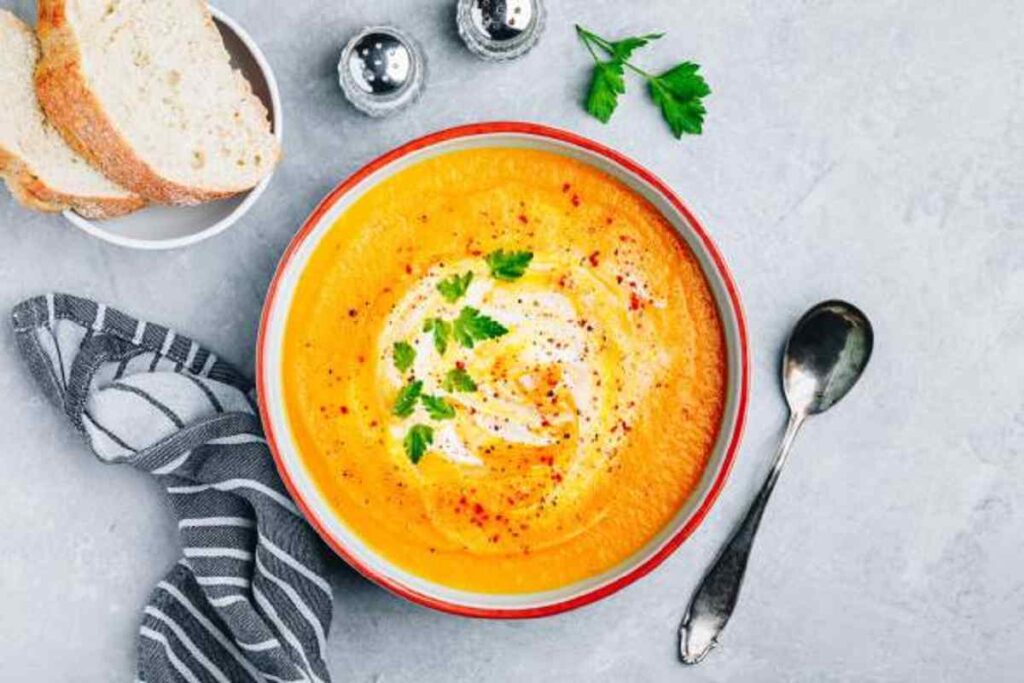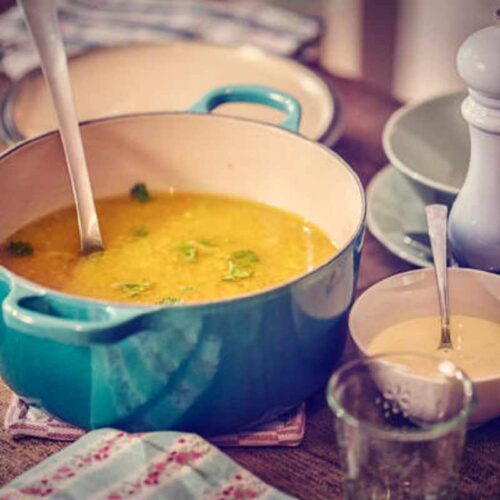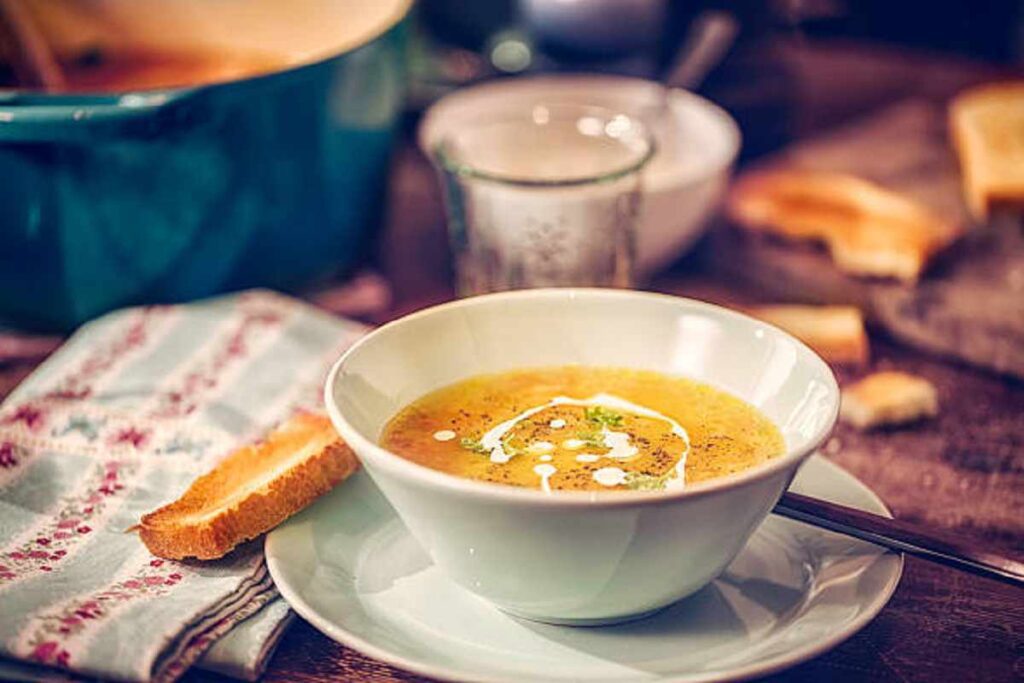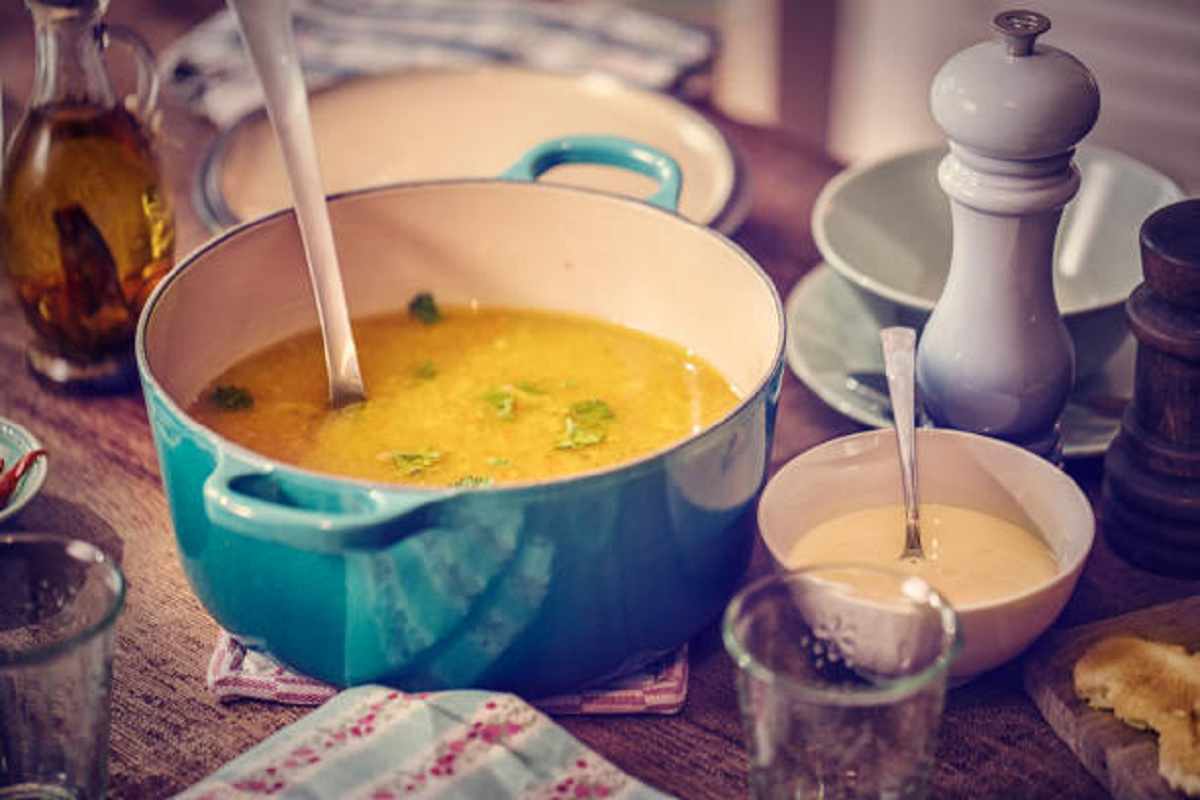Introduction
In the world of hearty and healthy soups, Mary Berry’s parsnip soup stands out as a timeless classic. With its rich flavor, smooth texture, and a touch of Mary’s culinary magic, this soup is the perfect choice for a relaxing meal. In this article, we’ll explore the art of making curried parsnip soup mary berry, from selecting the finest ingredients to mastering the cooking process. Let’s dive in and discover how to create this delightful comfort food.
Table of contents
Mary Berry Parsnip Soup: A Culinary Gem
When considering traditional British recipes, the name Mary Berry certainly holds prominence. Her parsnip soup is no exception to her culinary prowess. This article serves as an authoritative guide, providing extensive insight into the comprehension, preparation, and enjoyment of this beautiful dish. However, whether you possess vast culinary expertise or are a beginner in the realm of cooking, this experience promises to be a delightful luxury.
History Unveiled
The Roots of Parsnip Soup
To truly appreciate Mary Berry’s parsnip soup, we must first delve into the history of this humble yet satisfying dish. Parsnips, with their sweet and earthy flavor, have been cultivated for centuries. They were a staple in medieval European cuisine and eventually found their way into British kitchens.
Mary Berry’s Legacy
Mary Berry, a renowned British cook and television personality, has always championed traditional British recipes. Her parsnip soup recipe is a testament to her love for classic flavors and comforting meals. With her expertise, she has transformed this simple soup into a culinary masterpiece.
How to make Mary Berry Parsnip Soup?
To make Mary Berry Parsnip Soup, start by peeling and chopping fresh parsnips. Sauté onions and garlic in butter, then add the parsnips and vegetable or chicken stock. Simmer until parsnips are tender, then blend until smooth. Serve hot with a drizzle of cream and nutmeg, and optionally, homemade croutons for added crunch. Enjoy this comforting and nutritious soup!
- How long does it take to prepare Mary Berry’s parsnip soup?
You can have this delicious soup ready in approximately 45 minutes, making it a perfect option for a quick and satisfying meal.
- How long can I store homemade croutons, and what’s the best way to keep them fresh?
Homemade croutons can be stored in an airtight container at room temperature for up to one week. To keep them fresh for longer, consider storing them in the freezer, where they can last for several months. Just ensure they are completely cooled before storage.
- 8. How do I prevent croutons from becoming too soggy when added to salads?
To keep your croutons crispy in salads, add them just before serving. The moisture from the vegetables and dressing can cause them to soften over time. Adding them at the last minute ensures they retain their delightful crunch.

Why Mary Berry Parsnip Soup?
A Taste of Comfort
Mary Berry’s parsnip soup is the epitome of comfort food. Its creamy texture, combined with the subtle sweetness of parsnips, creates a satisfying and soothing experience, especially on chilly evenings.
Nutrient-Rich Goodness
Parsnips are not only delicious but also packed with nutrients. They provide a healthy dose of fiber, vitamins, and minerals, making this soup not only a treat for your taste buds but also for your well-being.
Versatile Delight
This soup’s versatility allows you to experiment with various toppings and seasonings. Whether you prefer a touch of spice or a hint of herbs, Mary Berry’s parsnip soup can be customized to suit your palate.

Mary Berry parsnip Soup
Equipment
- 1 Large Saucepan
Ingredients
- 2 tbsp butter
Video
Notes
The Recipe
Ingredients:
- 750g (about 1.5 pounds) parsnips, peeled and chopped
- 2 onions, peeled and chopped
- 2 cloves of garlic, minced
- 2 tablespoons olive oil
- 1 teaspoon ground cumin
- 1 teaspoon ground coriander
- 1.2 liters (about 5 cups) vegetable stock
- Salt and freshly ground black pepper, to taste
- 150ml (about 2/3 cup) double cream (optional)
- Fresh parsley, chopped, for garnish
Instructions:
- In a large saucepan, heat the olive oil over medium heat. Add the chopped onions and garlic, and sauté for about 5 minutes until they are soft and translucent.
- Add the chopped parsnips to the saucepan and cook for another 5 minutes, stirring occasionally.
- Sprinkle in the ground cumin and coriander, and stir well to coat the vegetables with the spices.
- Pour in the vegetable stock, season with salt and pepper, and bring the mixture to a boil. Once boiling, reduce the heat to a simmer, cover the pot, and let it cook for about 20-25 minutes or until the parsnips are tender.
- Remove the soup from the heat and use an immersion blender to puree the mixture until it’s smooth and creamy. If you don’t have an immersion blender, you can use a regular blender, but be sure to let the soup cool slightly before blending and work in batches if necessary.
- If desired, stir in the double cream to add richness to the soup. You can adjust the amount of cream to your taste.
- Return the soup to the heat and warm it gently. Taste and adjust the seasoning if needed.
- Serve the parsnip soup hot, garnished with freshly chopped parsley.
Step-by-Step Preparation
Preparing the Parsnips
Begin by peeling and chopping the parsnips into small chunks. The key here is to ensure uniformity in size so they cook evenly.
Sautéing the Aromatics
In a large pot, melt a generous knob of butter and sauté finely chopped onions and minced garlic until they turn translucent and aromatic. This forms the flavorful base of the soup.
Cooking the Parsnips
Add the chopped parsnips to the pot and stir them well with the sautéed aromatics. Allow them to cook for a few minutes, absorbing the flavors of the onions and garlic.
Blending to Perfection
Pour in the vegetable or chicken stock and let the mixture simmer until the parsnips are tender. Then, using an immersion blender or a regular blender, puree the soup until it reaches a silky-smooth consistency.

The Magic of Homemade Croutons
Homemade croutons are a simple yet transformative addition to many dishes. These small, golden cubes of toasted bread have the power to elevate soups, salads, and more to a whole new level of tastiness.
What makes homemade croutons magical is their versatility and ability to add texture and flavor. Here’s why they’re so special:
- Texture Transformation: A handful of homemade croutons can turn a basic salad into a delightful crunchy experience. They add a contrast in texture that can make every bite more interesting.
- Flavor Enhancement: Croutons aren’t just plain pieces of bread. When toasted with a little olive oil or butter and seasoned with herbs and spices, they become flavor bombs. You can customize the seasoning to match your dish, whether it’s a Caesar salad, tomato soup, or a Caesar salad.
- Waste Reduction: Homemade croutons are an excellent way to repurpose stale or leftover bread, reducing food waste. Instead of tossing that day-old baguette, transform it into croutons that can be used in various recipes.
- Easy to Make: Making homemade croutons is incredibly easy and requires minimal ingredients. It’s a beginner-friendly kitchen project that yields impressive results.
- Creative Freedom: You have complete control over the type of bread, seasoning, and size of your croutons. Experiment with different bread varieties, such as sourdough or whole wheat, and seasonings like garlic, rosemary, or Parmesan cheese.
Variations and Additions
1. Seasoning Variations:
- Garlic Parmesan: Toss the bread cubes with minced garlic, grated Parmesan cheese, and a pinch of Italian seasoning before baking.
- Herb-Infused: Use a combination of fresh or dried herbs like rosemary, thyme, oregano, or basil to create a fragrant and herbaceous flavor.
- Spicy Kick: Add a dash of cayenne pepper or crushed red pepper flakes for a spicy twist.
- Cajun Spice: Sprinkle Cajun seasoning on the bread cubes for a bold and spicy flavor.
2. Bread Variations:
- Sourdough: Sourdough bread adds a tangy flavor and rustic texture to your croutons.
- Whole Wheat: Opt for whole wheat or multigrain bread for a heartier and healthier option.
- Rye Bread: Rye bread can lend a unique flavor and darker color to your croutons.
3. Cheese Additions:
- Cheddar: Mix in shredded cheddar cheese for cheesy croutons with a melty center.
- Gruyère: Use grated Gruyère cheese for a rich and nutty flavor.
4. Nutty Crunch:
- Nuts: Add chopped nuts like almonds, walnuts, or pecans for an extra layer of crunch and flavor.
5. Sweet and Savory:
- Maple-Bacon: Toss the bread cubes with maple syrup and crispy bacon bits for a sweet and savory combo.
6. Healthy Options:
- Olive Oil: Substitute olive oil for butter for a lighter, healthier option.
- Gluten-Free: Use gluten-free bread to make croutons suitable for those with gluten sensitivities.
7. Custom Sizes:
- Large Croutons: Cut the bread into larger cubes for a more substantial bite, ideal for soups or as a side dish.
- Tiny Croutons: Cut the bread into small cubes for a delicate and subtle addition to salads.
8. Fresh Herbs:
- Fresh Basil: Toss the croutons with fresh basil leaves after baking for a burst of aromatic freshness.
- Cilantro-Lime: Add fresh cilantro and a squeeze of lime juice to your croutons for a zesty twist.
Health Benefits of Parsnip Soup
- Rich in Nutrients: Parsnips are a good source of essential nutrients, including vitamins and minerals like vitamin C, vitamin K, vitamin E, folate, potassium, and manganese. These nutrients play vital roles in maintaining overall health.
- Dietary Fiber: Parsnips are high in dietary fiber, which aids digestion and promotes a feeling of fullness.
- Low in Calories: Parsnips are relatively low in calories, making parsnip soup a great option for those looking to manage their calorie intake while still enjoying a hearty and flavorful dish.
- Antioxidant Properties: Parsnips contain antioxidants, such as vitamins C and E, which help protect your cells from damage caused by free radicals.
- Heart Health: The potassium content in parsnips can contribute to maintaining healthy blood pressure levels, which is essential for heart health.
- Immune Support: The vitamin C in parsnips is known for its immune-boosting properties.
- Weight Management: Due to its high fiber content, parsnip soup can help you feel fuller for longer, potentially reducing overall calorie intake and aiding in weight management.
- Digestive Health: The fiber in parsnips can support a healthy digestive system by promoting regular bowel movements.
- Bone Health: Parsnips contain vitamin K, which is essential for bone health. It helps in calcium absorption and bone mineralization, potentially reducing the risk of osteoporosis.
- Versatility: Parsnip soup is versatile, allowing you to incorporate other nutritious ingredients like vegetables, herbs, and spices to enhance its flavor and health benefits even further.

Conclusion
Mary Berry’s parsnip soup is a heartwarming and soul-soothing dish that has stood the test of time. With its simple yet exquisite flavors, it has earned its place in countless kitchens. Whether you follow the classic recipe or add your personal twist, this soup is a testament to the joy of homemade comfort food.
FAQs
Yes, you can freeze this soup. Just store it in an airtight container and it will keep well for up to three months.
If you prefer a lighter option, you can substitute cream with milk or a dairy-free alternative like coconut milk.
Absolutely! To make it vegan, use vegetable stock instead of chicken stock and replace the butter with a plant-based alternative.
While fresh parsnips are preferred for their flavor, you can use frozen parsnips in a pinch. Just be sure to thaw and drain them before cooking.
You can refrigerate leftover soup for up to 3-4 days. Reheat it gently on the stovetop or in the microwave when ready to enjoy again.







